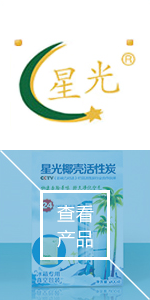Activated carbons are complex
products which are difficult to classify on the basis of their behaviour,
surface characteristics and other fundamental criteria. However, some broad
classification is made for general purpose based on their size, preparation
methods, and industrial applications.
Normally, activated carbons (R 1) are made in
particulate form as powders or fine granules less than 1.0mm in size with an
average diameter between 0.15 and 0.25mm. Thus they present a large surface to
volume ratio with a small diffusion distance . Activated carbon (R 1) is
defined as the activated carbon particles retained on a 50-mesh sieve (0.297 mm).
PAC material is finer material. PAC is made up of
crushed or ground carbon particles, 95-100% of which will pass through a
designated mesh sieve. The ASTM classifies
particles passing through an 80-mesh sieve (0.177 mm) and smaller as PAC. It is
not common to use PAC in a dedicated vessel, due to the high head loss.
Granular activated carbon has a relatively larger
particle size compared to powdered activated carbon and consequently, presents
a smaller external surface. Diffusion of the adsorbate is thus an important
factor. These carbons are suitable for absorption of gases and
vapors, because they diffuse rapidly. Granulated carbons are used for water treatment, deodorization
and separation of components of flow system and is also used in rapid mix
basins. GAC can be either in granular or extruded form. GAC is designated by
sizes such as 8x20, 20x40, or 8x30 for liquid phase applications and 4x6, 4x8
or 4x10 for vapor phase applications. A 20x40 carbon is made of particles that
will pass through a U.S. Standard Mesh Size No. 20 sieve (0.84xmm) (generally
specified as 85% passing) but be retained on a U.S. Standard Mesh Size No. 40
sieve (0.42xmm) (generally specified as 95% retained). AWWA (1992) B604 uses
the 50-mesh sieve (0.297 mm) as the minimum GAC size. The most popular aqueous
phase carbons are the 12x40 and 8x30 sizes because they have a good balance of
size, surface area, and head loss.
Extruded activated carbon combines powdered
activated carbon with a binder, which are fused together and extruded into a
cylindrical shaped activated carbon block with diameters from 0.8 to 130 mm.
These are mainly used for gas phase applications because of their low pressure
drop, high mechanical strength and low dust content. Also sold as CTO filter
(Chlorine, Taste, Odor).
Bead activated carbon is made from petroleum pitch and supplied in
diameters from approximately 0.35 to 0.80 mm. Similar to EAC, it is also noted
for its low pressure drop, high mechanical strength and low dust content, but
with a smaller grain size. Its spherical shape makes it preferred for fluidized
bed applications such as water filtration.
Porous carbons containing several types of inorganic
impregnate such as iodine, silver, cations such as Al, Mn,
Zn, Fe, Li, Ca have also been prepared for specific application in air pollution control
especially in museums and galleries. Due to its antimicrobial and antiseptic
properties, silver loaded activated carbon is used as an adsorbent for
purification of domestic water. Drinking water can be obtained from natural
water by treating the natural water with a mixture of activated carbon and Al(OH)3, a flocculating
agent. Impregnated carbons are also
used for the adsorption of Hydrogen Sulfide(H2S) and thiols. Absorption
rates for H2S as high as 50% by weight have been reported.
This is a process by which a porous carbon can be
coated with a biocompatible polymer to give a
smooth and permeable coat without blocking the pores. The resulting carbon is
useful for hemoperfusion. Hemoperfusion
is a treatment technique in which large volumes of the patient's blood are
passed over an adsorbent substance in order to remove toxic substances from the
blood.
Powdered activated carbon (R 1, PAC)
Granular activated carbon (GAC)
Extruded activated carbon (EAC)
Bead activated carbon (BAC)
Impregnated carbon
Polymer coated carbon





